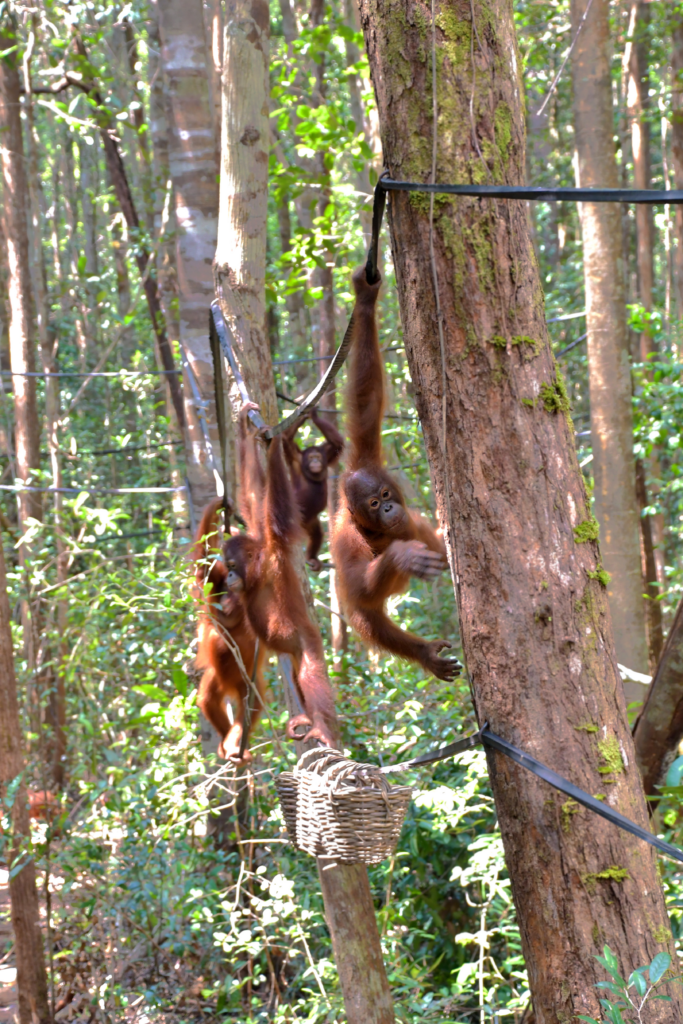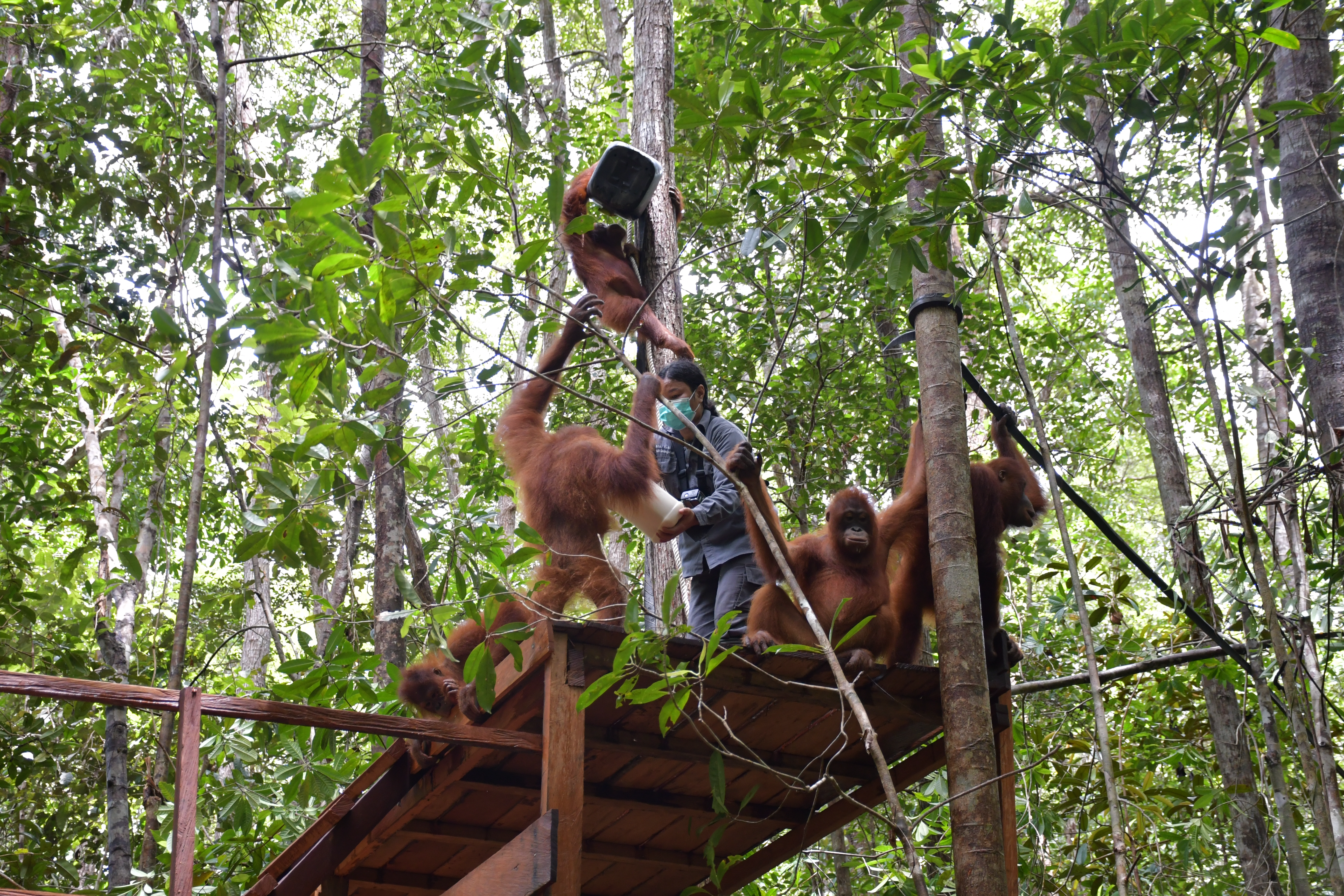Behind every release of a rehabilitated orangutan is a remarkable story of how humans – through years of immense patience and thousands of hours of behavioral study – have taught a wild animal crucial survival skills. At the BOS Foundation, Dr. Nadine Sugianto and her team closely monitor the progress and adjust the “enrichment curriculum”.
For the orangutans living in the rainforests of Borneo, life above the ground is not a choice or play – it is a matter of survival. Daily nest building, swinging between trees in the continuous search for food and cracking open forest fruits are all crucial skills that are passed on through the tight bond between mother and baby.
At the rehabilitation centres at Nyaru Menteng and Samboja Lestari, orphaned and rescued orangutans learn their natural skills from humans. Through patient guidance, creative enrichment, and a lot of time on human-made scaffolding and climbing structures, their training is mainly focused on three key areas: climbing, foraging and nest building.
The path to arboreal living
In the wild, orangutans spend most of their time between 10 and 15 meters above ground. Yet, in rehabilitation, according to Nadine, many still spend too much time on the forest floor, where they are vulnerable to predation and unable to build sufficient muscle strength for life in the canopy.

To encourage their arboreal agility, the rehabilitation centres introduce a series of enrichment systems designed to bring the orangutans from the forest ground up into the treetops:
- Arboreal pathways and bridge systems that link trees and platforms.
- 3D climbing structures and pulleys to encourage movement and exploration.
- Feeding platforms are placed high off the ground to promote natural foraging behaviour.
These installations allow orangutans to develop critical locomotion techniques, such as:
- Tree sway – using their weight to bend tree trunks and move across the canopy.
- Arboreal clambering – climbing with all four limbs to navigate safely.
- Horizontal locomotion – moving along long, sturdy branches.
- Bridge locomotion – crossing natural or man-made bridges without descending.
Each new climb builds strength, confidence, and independence – essential qualities for future release candidates.
A taste for the wild
Foraging and eating may seem simple, but for orangutans, it is an art form. In the forest, it is what keeps them busy for most of the day – using diverse techniques such as biting, peeling, extracting, scraping, banging, and ripping – to unlock the nutrients hidden in fruits, bark, and shoots.
In rehabilitation, many young orangutans must relearn these food-processing skills. Beyond the caregivers showing orangutans the skills, BOS Foundation has integrated external feeding enrichment systems into their enclosures that encourage them to work for their food continuously, as they would in the wild.
By offering a variety of food items – some with tough shells, fibrous husks, or sticky fluids – the orangutans are challenged to use creativity and patience to access what is inside. This also teaches them to identify which foods are edible, a crucial skill for survival once they are released. Every new fruit or challenge provides a chance for them to think, experiment, and eventually succeed.

Building a home among the branches
At sunset in the rainforest, wild orangutans embark on a fascinating ritual. They bend and weave branches into soft, secure nests, carefully crafting structures strong enough to support their considerable size and weight throughout the night. It is a repetitive, nightly ritual, performed with remarkable skill – and one that keeps them safe from predators and the damp forest floor.
However, nest building, as with other crucial skills, does not always come naturally and must be taught. With rehabilitated orangutans, dedicated caretakers teach this, and nest-building apparatuses will encourage further learning in shared enclosures after forest school:
The nest-building apparatuses mimic the natural structure of tree branches and with soft rubber bands, the orangutans can practise and learn techniques like “detach and pile” – bending and layering branches – or weaving for a more stable design.
From learning to living wild
Every skill learned brings our orangutans one step closer to freedom. From mastering the art of tree swaying to crafting their first nest, these moments represent more than progress – all are milestones on the path to a wild, independent life.
By adopting an orangutan, you also support continuous enrichment in the enclosures – helping every orangutan develop the skillset needed to adapt and survive when the big release day finally arrives.
See our adoption candidates here